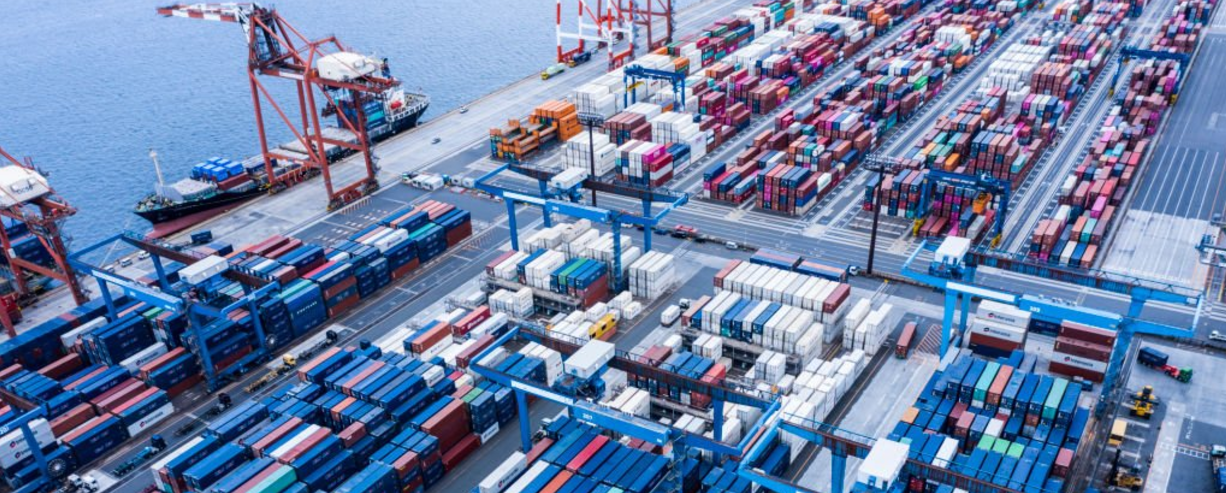Supply chain disruptions can significantly affect your business anytime. Even the most well-planned business can be derailed by an unexpected disruption. From unexpected delays in product supply to the global crisis, these challenges can impact your customer satisfaction and as well as revenue. But do not worry, there are some proven ways to tackle these disruptions and keep your business streamlined.
What Is Supply Chain Disruptions
The entire procedure starting from sourcing the raw materials for the products development to the delivering of products to end customers builds a Supply Chain.
Supply chain disruptions refer to any interruptions in the regular flow of products or services in the supply chain. These interruptions can cause delays or shortage of product supply and the increased cost.
Supply chain disruptions may occur at any stage starting from sourcing the products to the final delivery to the consumers. Factors like pandemic, product issues, machinery breakdown or any logistical issues may cause supply chain disruptions. That way, productivity reduces, product cost increases and both customer and employee get unhappy.
All those factors that can disrupt your supply chain can be categorized into two – organization-internal factors and outside factors.
Within-the-organization factors – Defects in products during manufacturing, slowing down of overall productivity due to high employee turnover and insufficient contingency plan are all the internal or within the organization factors. Additionally, delays in production schedule due to any workforce strikes and unreliable suppliers are also considered as the internal factors behind supply chain disruptions.
Outside factors – Natural disasters or bad weather causing transportation delay, pandemics like COVID-19 or any political, economical factors are considered as the outside factors for supply chain disruptions.
Now you know what are the factors affecting the supply chain. In this post you will now explore 5 powerful solutions to overcome supply chain challenges and ensure your business continuity –
- 1. Detect Possible Risk Factors
- 2. Enhance Collaboration with Your Supplier
- 3. Leverage Technology To Identify and Mitigate Supply Chain Risk
- 4. Build a Contingency Plan
- 5. Diversify Your Supply Sources
#1. Detect Possible Risk Factors

The first thing you can do to keep your supply chain streamlined is to identify your risk factors. Once you do that you can easily realize what next step is required for your business. Consider some of the common factors that can impact your supply chain and how to mitigate them.
Financial risk is a crucial one among all other risks. It refers to a sudden cost increase and unexpected exchange rate fluctuation. Financial risk also arises for a sudden depreciation in buyer’s currency. Both suppliers and buyers suffer from this risk. To mitigate this risk you can take some quality steps –
- Do a thorough research to evaluate your counterparty’s financial stability. This will help both parties to adopt any unexpected financial situation.
- Keep Monitoring currency trends regularly and forecast exchange rates. This will help to prepare for any shifts.
- Ensure currency hedging by using financial instruments like forward contracts, futures, and options to lock in exchange rates
- Try to source from suppliers in different countries and currencies to balance currency rate fluctuation.
Unstable Geopolitical situation is another risk that can affect the production facilities and delay in supply chain. Geopolitical issues can disrupt the transportation routes like land, air, sea transports. To mitigate this risk –
- Reduce the dependencies on the suppliers in politically unstable regions.
- Establish a backup shipping and alternative transportation routes to handle any unwanted situation when the primary route is disrupted.
- Stay informed about the political events so that you can anticipate possible disruptions that can affect your business.
- Create contracts with your partners that include flexibility during any political instability.
#2. Enhance Collaboration with Your Supplier

Effective supplier collaboration is essential to overcome supply chain disruptions. You can follow the below strategies to strengthen your partnerships with your supplier –
- Maintain a frequent communication with your suppliers to stay informed about any production delays, logistics changes or changes in demand.
- Create contracts with your supplier that allows adjustments in volume, schedules and prices in response to the market conditions.
- Use Technology to ensure proper inventory tracking. Keep track of the order status and logistics. Using ERP or a Supply Chain Management System (SCM) can be helpful for managing the flow of products and streamlining the collaboration with your suppliers.
Sustainable Partnerships: Build mutually beneficial and long term relationships with your suppliers. Improve collaborations by building trust and goodwill. This will be helpful to get faster responses during disruptions also.
#3. Leverage Technology To Identify and Mitigate Supply Chain Risk

Technology plays a vital role in reducing supply chain risks. According to a Mckinsey report, companies using digital tools in managing their supply chain have achieved a 30% reduction in their operational cost.
A predictive analysis can help identify the risk factors like supplier delays, natural disasters, geopolitical disruptions and make better decisions. If you are using any ecommerce platform like Shopify, Squarespace, Bigcommerce or others you can easily integrate your store with some applications that can help track your supply chain and mitigate the risks. Before your integrate any apps consider the following points –
- Ensure that the app offers features according to your needs like the inventory management, real-time shipment tracking and demand forecasting.
- Check if the app provides enough documentation, and customer support.
- Consider the app’s pricing model and evaluate the Cost and ROI.
- Consider their data security and privacy policy
#4. Build a Contingency Plan

A strong contingency plan can help you avoid major disruptions in the supply chain. Maintain a safety stock to reduce the risk of stockouts during any unexpected delays.
Try to monitor your shipments in real time and if required you can use some digital tools to identify some issues early and take precaution. According to a source, 63% of the businesses face less supply chain disruptions using digital tools.
Keep plans for alternative transportation routes. Review your plan from time to time and try to identify some potential issues early to take precaution instantly.
#5. Diversify Your Supply Sources

Relying on a single supplier can increase supply chain risks. To ensure smoother business operations, diversify your supply sources. Once you have multiple sources, you can easily handle the unexpected disruptions like production halts or shipping delays.
To avoid risks due to weather events and political changes, identify your backup suppliers in different regions. Additionally, once you diversify your sources, you have the opportunity to negotiate for better pricing. Also you will have access to a wider variety of products.
Don’t wait until any disruption hits your business. Start strong relationships with multiple vendors, avoid unexpected disruptions and keep your business streamlined without any hiccups.
Final Thoughts
Supply chain disruptions are a challenge, but with the right strategies, your business can stay resilient and thrive. By diversifying your suppliers, maintaining safety stock, leveraging technology, building strong partnerships, and planning for alternative logistics, you create a robust supply chain that adapts to any situation.
Want to stay ahead of the competition? Start applying these strategies now and secure a stronger future for your business.


